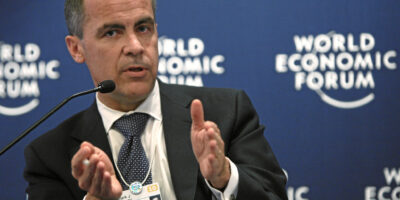Michael Moore Acknowledges: There Are No Alternatives to Energy Reality

By attacking green energy, Michael Moore turned into the new Orange Man. In Planet of the Humans, a documentary he sponsored and is actively marketing, well-meaning environmental activists are told that the road to environmental hell is paved with green investment funds and lined with wind turbines, solar panels, and biomass-burning power plants.
Far from being led to the Sustainable Land, they have been deceived by the “profits” of the Green religion who sold their souls to petro-monarchies, the logging industry, biofuel manufacturers and cynical crony capitalists. Even the people who manufacture, build, sell, install and operate solar panels and wind turbines show little faith in the impractical, unaffordable, unreliable and non-scalable technologies they promote for a living. In the end, our only road to salvation is a return to the low human numbers and widespread poverty that existed before humanity got addicted to fossil fuels.
While Planet of the Humans doesn’t say anything that long-time critics of alternative energy haven’t discussed in more detail, it lifts the green curtain and provides much new and very effective footage of the waste, lies and destruction that prop up the sets on the stage. Among the waste are the bankrupt and collapsed infrastructure of many wind and solar power projects.
Among the lies are sustainability leaders evading tough questions, the fossil-fuel-free investment funds that include internal combustion engine and drilling equipment manufacturers, a concentrated solar thermal plant that burns much natural gas, diesel generators that power alternative energy festivals, allegedly 100% renewable factories connected to the natural gas and electricity grids, and the fossil fuel-powered beachfront properties, luxury yachts and private jets of “green” billionaires.
Among the destruction one sees centuries-old Joshua trees turned into wood chips to make room for solar panels and orangutan habitat cleared in the name of “sustainable” biodiesel production.
The creators of Planet of the Humans only discuss (and then very briefly) their Malthusian prescription to cure our civilizational ills towards the end of their documentary, and then mostly by letting a few population control advocates speak on their behalf. They are, however, much more explicit in their Earth Day Live Stream and in a shorter interview with The Hill. To sum up their worldview and agenda in no particular order: 1) the idea of infinite growth on a finite planet is absurd; 2) the profit motive is shortsighted and the rich are screwing the planet; 3) markets, technological innovation and nuclear power are the “hopium” of climate change deniers; 4) humanity must revert back to pre-industrial population numbers and standards of living; 5) REDUCE, reuse… and only recycle if you haven’t been able to consume less to begin with; 6) Planned Parenthood is doing Gaia’s work; 7) in the end, the problem is US.
As could be expected, the first part of the documentary has awakened the inner Greta Thunberg of a wide range of science and environmental journalists, green entrepreneurs, alternative energy insiders, climate activists, academics and in another celebrity green documentarian whose income, public image and purpose in life revolve around leaving fossil fuels in the ground and promoting the kind of technologies decried in Planet of the Humans. Defenders of the documentary, who sometimes fault Moore and his collaborators for not going far enough, have accused these “awoken” attackers of denying the laws of physics, invoking pal-reviewed studies rather than real-world evidence of success, and of using the same long-debunked arguments and ad hominem deplatforming tactics usually deployed against privileged, climate-denying, profit-hungry, white, male, boomer fossil fuel industry shills. Needless to say, many defenders of green energy are more supportive of the documentary’s Malthusian prescription, and vice versa.
The main virtues of the creators of Planet of the Humans are arguably the long-standing criticisms of green energy they brought to the attention of an unsuspecting audience and the bluntness with which they express their Malthusian beliefs. Unbeknown to them, however, their stance on the latter issue is more reactionary than left-wing. In what follows I provide additional background to the documentary and discuss why the filmmakers’ preferred path of ecological soundness through population control and increased poverty worldwide is even less sustainable than the system they decry.
How Dare You!
Planet of the Humans was written, directed, produced and voiced-over by Moore’s long-time collaborator Jeff Gibbs. The story he crafts is a classic “Bootlegger and Baptist” tale. This expression refers to the political dynamic observed in dry counties in the United States where the local government prohibits the sale of alcoholic beverages. Supporters of the policy include both those who want to achieve the stated outcome of a policy (the Baptists) and those who benefit by undermining its purpose because of the creation of a vibrant black market (the Bootleggers).
In Gibbs’ story, well-meaning environmental activists, misinformed by a corrupt leadership that includes Al Gore, prominent campaigner Bill McKibben and the Sierra Club, end up doing the bidding of billionaire capitalists (including their ultimate bête noire, the Koch Brothers) who only care about the green that destructive government subsidies and renewable energy mandates puts in their bank accounts.
If Gibbs is the face, voice and heart of the documentary, its technical brain is energy writer Ozzie Zehner, whom Gibbs met when Zehner was promoting his 2012 book Green Illusions: The Dirty Secrets of Clean Energy and the Future of Environmentalism. Although credited as a producer, Zehner is presented in the documentary as an unassuming and objective technical analyst who pierces the green technology smokescreen by pointing out that wind turbines, solar panels, and biomass-burning power plants could never exist without, and are always parasitical upon, our fossil fuel-powered energy, manufacturing and transportation infrastructure.
People and the environment, he tells viewers, would be better off if we simply burned coal and natural gas to produce electricity rather than destroy the environment to make room for solar panels and wind turbines. In the final act of the documentary, however, Gibbs and Zehner are revealed to be radical Malthusians whose main concern is global overpopulation and unequal overconsumption.
Apart from long-standing technical debates, two specific critiques of Planet of the Humans stand out. The first is the contention that Bill McKibben and the Sierra Club reversed their stance on biomass burning a few years ago. Yet, as Gibbs accurately replied, McKibben has engaged in much mixed messaging on the topic and his “actions are an endorsement of the status quo, not a stance against biomass.” The other is that some of Gibbs and Zehner’s data and footage on wind and solar power is dated. As a typical thirty-something put it, their material sometimes goes back over a decade, an “absolute eternity, in solar development years” because things are now very “different in 2020.”
Needless to say though, back then none of their supporters claimed that these technologies were not ready to be deployed on a large scale nor worthy of massive government support. Critics of Gibbs and Zehner also fail to provide satisfactory answers to long-standing critiques, such as have solar panels finally become economically competitive without subsidies or government mandates? Have the perennial problems of intermittency and low power density been solved in practice? Will ramping up solar and wind electricity production now finally generate economies of scale and reduce consumer prices rather than destabilize the grid and create ever greater energy poverty? While no one denies incremental improvements in the last decade, in practice the solar power picture remains as bleak as ever.
Perhaps Gibbs and Zehner’s take on wind and solar energy is not as up-to-date as some would like because they devoted much time in the last few years to documenting a major push towards burning biomass for electricity and heat production (a subject that has also been covered critically in another recent green documentary).
The beauty of burning wood is that it allows policy-makers to meet ambitious renewable energy mandates without destabilizing the electric grid the way greater reliance on wind and solar power would. Needless to say though, burning biomass on a large scale (which must imply going beyond garbage and forestry residues) is disastrous for both taxpayers’ wallets and their health, to say nothing of the environment.
Most importantly, as Gibbs and Zehner point out, our forests would be gone in short order if we got serious about this. Indeed, it was a fuelwood shortage that triggered the large scale development of coal burning technologies a few centuries ago. As the economist William Stanley Jevons observed in 1865, which would obviously qualify as a real absolute eternity in energy development, “Forests of an extent two and a half times exceeding the whole area of the United Kingdom would be required to furnish even a theoretical equivalent to [the country’s] annual coal produce.”
Jevons also explained concisely at the time why coal-generated steam had supplanted wind in the powering of mills and the pumping of water out of mines:
The first great requisite of motive power is, that it shall be wholly at our command, to be exerted when and where and in what degree we desire. The wind, for instance, as a direct motive power, is wholly inapplicable to a system of machine labour, for during a calm season the whole business of the country would be thrown out of gear. Before the era of steam-engines; windmills were tried for draining mines; “but though they were powerful machines, they were very irregular, so that in a long tract of calm weather the mines were drowned, and all the workmen thrown idle. From this cause, the contingent expenses of these machines were very great…
He further added that an “ordinary windmill has the power of about thirty-four men, or at most, seven horses.” Many “ordinary factories would therefore require ten windmills to drive them.” Even worse, no “possible concentration of windmills” could ever “supply the force required in large factories or iron works.” With coal, on the other hand, “almost any feat is possible or easy” and going without it would mean his contemporaries would have been “thrown back in the laborious poverty of earlier times.” And in those days one didn’t even have to think about other problems inherent to an electric grid…
In the end, the fundamental problem of alternative energy is not that it is being propped up by crony capitalists and corrupt environmental leaders, but rather that wishful thinking (even in the form of fancy theoretical models and scenarios or peer-reviewed papers), subsidies and political will are still no match for the laws of physics and technical realities that have marginalized intermittent and low power density energy sources such as biomass, wind and solar power for the last two centuries.
Boomer “Population Bombers”
If Gibbs and Zehner prove in their analysis of alternative energy that they can follow facts and numbers wherever they might lead them, their Malthusian blinders prove too overwhelming to let them acknowledge the evidence on humanity’s environmental impact. Indeed, one could argue that their ability to interpret population and growth numbers goes out the (triple pane?) window faster than Bill McKibben deflecting questions about his support of biomass burning and Wall Street connections. Once again, their Earth Day Live Stream with Moore helps understand why. In establishing their green credentials Moore and Gibbs wax nostalgic about coming of age as environmentalists in the late 1960s and of their participation in the first Earth Day. What they do then is call for today’s youth to join a new environmentalist project that sounds exactly like the one a couple of bright radical teenagers would have put together in 1970 after having just read Paul Ehrlich’s The Population Bomb.
If Moore, Gibbs and Zehner put Thanos to shame by the radical nature of their prescription, their diagnostic is still very much in line with that of many other prominent pessimistic contributors to current sustainability and climate change debates. For instance, a year ago “hockey stick” creator Michael E. Mann remarked that “[c]limate change is simply one axis in a multi-dimensional problem that is environmental sustainability. They all stem from the same problem – too many people using too many natural resources.”
A few months before, the second chairman of the Intergovernmental Panel on Climate Change, Robert Watson, argued that the “more people we have on the Earth and the richer they are, the more they can demand resources.” Because of this, he added, “there’s no question the threats on the Earth today are far more than, say, 50 years ago and in 50 years’ time, there will even be more threats.” His successor Rajendra K. Pachauri was even more explicit when he stated in 2007 that humanity has “been so drunk with this desire to produce and consume more and more whatever the cost to the environment that we’re on a totally unsustainable path.”
He was “not going to rest easy until [he had] articulated in every possible forum the need to bring about major structural changes in economic growth and development. That’s the real issue. Climate change is just a part of it.” Professor Hans Joachim Schellnhuber, the director of the Potsdam Institute for Climate Impact Research and an adviser to the Papal encyclical Laudato Si, has long been on the record as estimating the carrying capacity of the planet at “below 1 billion people.” Even Bill McKibben penned a book titled Maybe One: A Case for Smaller Families.
The main problem for the three documentarians of the ecopalypse is that two generations ago Paul Ehrlich was himself only the latest in a long line of (neo)Malthusian thinkers who ended up getting everything wrong. As they know, in the decades that followed the first Earth Day humans became more numerous and wealthier. Yet, non-renewable resources simultaneously became more abundant, life expectancy across the globe increased and people became healthier. In advanced and many developing economies the air and the water got cleaner while the forest cover bounced back.
Indeed, things turned out so well in terms of human flourishing that Bill McKibben acknowledged in 1998 that “[e]ach new generation of Malthusians has made new predictions that the end was near, and has been proved wrong.” In this he echoed an article in an 1854 issue of The Economist whose author wrote that “Nobody, except a few mere writers, now troubles himself about Malthus on population… [but his] error may yet indeed linger in the universities, the appropriate depositories for what is obsolete.”
Unfortunately, Moore, Gibbs and Zehner are too caught up in their ideological priors to acknowledge that things have indeed gotten better overall. Their main problem is paradoxically their inability to conceive that we live on the planet of the humans and not simply that of bacteria and other life forms whose growth is indeed constrained by their inability to create resources.
Being Human
Writing two centuries ago, anarchist theorist William Godwin observed that before the publication of Thomas Robert Malthus’ 1798 Essay on the Principle of Population most people believed that an increase in population would prove beneficial. Godwin saw “something exhilarating and cheerful” in this earlier spirit when humanity believed it could summon “the unlimited power we possess to remedy our evils, and better our condition.” Humans, he observed, then felt they “belonged to a world worth living in.”
Godwin added that a key difference between humans and other life forms is that, in most places, people were “not living upon the wild fruits of the earth, or the wild animals of the field,” but upon the products of human industry. As such, each new individual made it possible to increase the “means of subsistence.” Furthermore, a human being “is the only animal capable of persevering and premeditated industry… the only creature susceptible of science and invention, and possessing the power of handing down his thoughts in those permanent records, called books.” The human species, he argued, is therefore “capable of improvement from age to age, by means of which capacity we have arrived at those refinements of mechanical production and science, which have been gradually called into existence; while all other animals remain what they were at first, and the young of no species becomes better or more powerful by the experience of those that went before him.”
Godwin’s stance was no oddity on the political left. Indeed, until the 1960s many moderate and most radical thinkers on this side of the political spectrum were techno-optimists who believed that humanity had the ability to and should pursue material and social betterment. For instance, in 1844 a young Friedrich Engels famously wrote that the “productive power at mankind’s disposal is immeasurable” and the “productivity of the soil can be increased ad infinitum by the application of capital, labour and science.” Engels refuted Malthus by observing that “science increases at least as much as population. The latter increases in proportion to the size of the previous generation [but] science advances in proportion to the knowledge bequeathed to it by the previous generation, and thus under the most ordinary conditions also in a geometrical progression.” Karl Marx wrote soon afterwards in the first volume of Capital that an “abstract law of population exists for plants and animals only, and only in so far as man has not interfered with them.”
In 1944 the progressive American economist Clarence Ayres echoed Engels by emphasizing the importance of “the principle of combination” in human creativity. The exponential growth or proliferation of technical devices could thus be explained because “the more devices there are, the greater is the number of potential combinations.” New and better technology, in turn, meant that natural resources were really “materials” that could become ever more abundant as “natural resources are defined by the prevailing technology” rather than what nature had made available to humanity.
In 1960 the American Trotskyist Joseph Hansen argued that Marxists had long taken “a decidedly different view of humanity” than neo-Malthusians because they “note that man has hands and a brain, the capacity to use tools and an inclination for teamwork. These have made him, in distinction to all other animals, a food producer.” Hansen added that, in “today’s world, hunger is completely abnormal. Humanity can produce all it needs and many times over. Moreover, man’s capacity to increase his food supply expands with the increase in population and at an ever higher rate than population growth.” A big population was therefore “an asset, not a liability. Failure to see this rather obvious fact is the basic flaw in the Malthusian argument.”
Many proponents of the free-market were also techno-optimists for some of the same reasons. A concise statement to this effect was published in 1889 in the Westminster Review. The anonymous author first observed that the “Malthusian theory does not accord with facts” because as “population grows, instead of production being less per head, statistics clearly prove it to be greater.” The explanation for this counterintuitive outcome was that the “intelligence which is fostered in large communities; the advantages of the division of labour; the improved transit, which increases in efficiency with an enterprising people in proportion as numbers become large, and is impracticable until population has developed” were “more than a match in the competition of production for any advantage a thinly scattered community may in some respects gain on a virgin soil.”
The problem with Malthusians was that “while bringing prominently forward the needs of an increasing population,” they kept “out of view the increasing means of supply which the additional labour of greater numbers will produce.” The available evidence, however, clearly showed that “so long as there are a pair of hands to provide for every mouth, with intelligence and energy ample production is assured, unless society erects artificial barriers by means of its laws.”
The key divide among techno-optimists was not about their ultimate goal, but about the best means to promote beneficial advances. Orthodox Marxists and various other progressive thinkers favored the state or community control of the means of production in order to limit greed and inequality. Free-market proponents supported personal freedom, secure property rights, and the economy-wide feedback provided by the price system. (In a few words, prices ensured that as a resource became scarce, its price would rise, thus incentivizing economic actors to use the resource more efficiently, seek out new supplies, or develop substitutes.)
Far from being an inherently progressive perspective, Moore, Gibbs and Zehner’s misanthropic Malthusianism was historically more closely associated with aristocrats, the leisure class and reactionary and anti-liberal movements. At the risk of oversimplifying a complex story, the real roots of their outlook can be traced back to the image problem well-established eugenicists were confronted with at the end of the Second World War. Re-inventing themselves as neo-Malthusians, they laid the foundations for 1960s environmentalism. Apparently unbeknown to Moore, some of the main opponents of “population bombers” in the 1960s and 1970s were Marxist regimes and thinkers.
Back in the USSR
Why is environmentalism now generally thought of as progressive ideology? As Gibbs comments in his documentary, it fills a spiritual void among atheists who dislike the market system. Another issue he does not touch upon is that techno-optimists who believed in markets proved right while those who pinned their hopes on central planning were crushed. Unfortunately, Moore and Gibbs seem to know little about events that occurred during their lifetime on the other side of the Iron Curtain. (Granted, learning something of value in this context might prove difficult to people who praised the virtues of the Cuban healthcare system a few years ago.)
Be that as it may, as the economist and demographer Mikhail Bernstam observed three decades ago, throughout the twentieth century market-based economies became wealthier and cleaner over time, while centrally planned economies stagnated, or even regressed, while becoming increasingly more polluted. Bernstam considered this outcome the “most important reversal in economic and environmental history since the Industrial Revolution.”
Politics-driven central planning, Bernstam and many other people (including Marxist intellectuals) observed, created much more scrap, spills, slag, discards, refuse, and other processing losses than a market economy. It also destroyed primary resources and resulted in large losses of intermediary and final output during transportation and storage. This ecological collapse (of which there is ample film footage) was ultimately created by an economic system in which the profit motive had been theoretically eradicated, not by people increasing in numbers and lifting themselves out of poverty.
In short, what the twentieth century should have taught Moore, Gibbs and Zehner is that environmental degradation has in the end really nothing to do with population and economic growth. It is rather a society’s (mis)handling of industrial wastes and sewage and its capacity to innovate or not that matter. For instance, air pollution in London was much worse in 1900 – when Londoners were much less numerous and much poorer – than today. Needless to say, London, Paris, New York and all other major cities also struggled at the time with horse manure, a public health problem that was much worse than anything that would come afterward.
Closer to us, the journalist Charles Mann observed that Paul and Anne Ehrlich opened their Population Bomb with a vivid description of the polluted conditions they had observed in New Delhi in 1966, a situation they attributed to overpopulation. Yet, as Mann writes, the Indian capital at the time had a population of approximately 2.8 million while that of Paris was near 8 million. “No matter how carefully one searches through archives,” Mann observes, “it is not easy to find expressions of alarm about how the Champs-Élysées was “alive with people.”
Instead, Paris in 1966 was an emblem of elegance and sophistication.” Needless to say, this was partly the result of increased fossil fuel use that had made possible significant advances in wealth creation, some of which in turn made possible advances such as sanitizing drinking water and removing and treating sewage.
One reason why Moore and his acolytes are blind to what stands right in front of their eyes is that they completely misunderstand the impact of the profit motive on the environmental behavior of creative people. To Moore and a plethora of sustainable development theorists, the search for greater profits inevitably results in dumping as much waste materials in the environment as possible in order to cut down on production costs. To many past analysts though, what are now described as “environmental externalities” were better thought of as potential profit opportunities that often delivered both greater wealth and reduced environmental impact.
For instance, in 1886 an encyclopedia entry described how, “in the earlier days” of many manufacturing branches, “certain portions of the materials used have been cast aside as ‘waste’,” but over time “first in one branch and then in another, this “waste” material has been experimented upon with a view to finding some profitable use for it; and in most instances the experiments have had more or less satisfactory results.” Writing in 1904, the American industrial chemist Leebert Lloyd Lamborn observed: “If there is one aspect more than any other that characterizes modern commercial and industrial development. . . it is the utilization of substances which in a primitive stage of development of any industry were looked upon as worthless.”
The key driver of this (truly) green corporate behavior, as was widely understood at the time, was that the profit motive rewarded manufacturers who turned freely available polluting emissions into lucrative byproducts. The business and technology journalist Peter Lund Simmonds thus observed in 1875 that “as competition becomes sharper, manufacturers have to look more closely to those items which may make the slight difference between profit and loss, and convert useless products into those possessed of commercial value.” George Powell Perry later wrote that “the commercial spirit of [the] age has developed wonderful genius for utilizing waste products.” The “greatest source of wealth, in these days of great riches,” had “been acquired largely through the wise use of that which men term waste. In all departments of life men have studied how to utilize to the utmost the refuse and remnants that follow in the wake of legitimate enterprise.” Indeed, humans had found ways to turn “everything into a source of wealth” and the closer they kept to this “law of nature,” the “wiser and wealthier [they would] grow.” Karl Marx himself concurred that the “capitalist mode of production extends the utilisation of the excretions of production and consumption” and the “so-called waste” was typically turned “into new elements of production, either of the same, or of some other line of industry” in order to improve “the rate of profit.” He even went so far as to describe industrial waste recovery as the “second big source of economy in the conditions of production” after economies of scale.
As I have documented in more detail elsewhere, the early history of the American petroleum extraction and refining industry provides many illustrations of this type. For instance, in the early 1860s the leftover portions of the refining process that extracted kerosene out of petroleum were waste products typically dumped in rivers or burned. Two decades later, petroleum waste had been reduced substantially through the creation of candles, lubricating oils, greases, solvents, paraffin, petrolatum (better known by the trademark Vaseline) and insect repellents.
Despite limited uses in the production of paints and varnishes, however, most gasoline was still wasted as it was too volatile to be used as a lighting fuel. Fortunately, the commercial development of the internal combustion engine soon turned it into the main output of refineries. In the meantime, some of the previously wasted heavier fractions of petroleum found lucrative markets used in road surfacing, roofing and as heating fuel.
As the Chief Chemist of the U.S Bureau of Mines, Arno C. Fieldner, wrote in 1925, “the object of all fuel research is either to eliminate waste and increase efficiency in the mining, preparation and utilization of fuels, or to convert the raw fuel by treatment or processing into a more convenient or effective form for use with, in many cases, the recovery of valuable by-products for other purposes.”
Get it Out of the Ground!
Perhaps the key implicit lesson of Planet of the Humans is that humanity has been able to have its green cake and eat it too by replacing resources produced on the surface of the planet by others dug from below. In other words, coal, petroleum and natural gas have historically played various roles as sources of heat, transportation fuels, electricity and countless synthetic products that, along with other minerals, have allowed humans to simultaneously create new and better materials and energy sources while reducing pressures on the biosphere. This large-scale substitution process allowed our ancestors to, in the words of historical demographer E. A. Wrigley, “break free from photosynthesis.” The anti-Malthusian geologist Kirtley Fletcher Mather thus observed approvingly in 1944 that a “hundred years ago, nearly 80 per cent of all the things men used were derived from the plant and animal kingdoms, with only about 20 per cent from the mineral kingdom. Today only about 30 per cent of the things used in industrialized countries come from things that grow; about 70 per cent have their sources in mines and quarries.”
Although not perfect, carbon fuels and various minerals drastically reduced harvesting pressure on wild resources such as whales (whale oil, perfume base), trees (lumber, firewood, charcoal), birds (feathers), agricultural products (fats and fibres derived from animals and plants, leather from livestock, dyes from plants and animals) and other wildlife (ivory, furs, skin).
By making possible the development of modern transportation technologies (from railroad and steamships to trucking and container shipping), the replacement of work animals (horses, mules, oxen) by much more powerful and reliable tractors and agricultural machinery, and the creation of countless inputs (from synthetic fertilizers to plasticulture), a growing and richer population was able to drastically increase agricultural productivity and release a large amount of agricultural land.
To be more specific, coal-powered railroad and steamships made possible for the first time in human history large-scale, reliable and affordable long-distance transportation. This paved the way for improved overall nutrition by concentrating food production in the most suitable locations, thus making food more plentiful, diverse and affordable. Fossil fuel-powered transportation also eradicated famine by allowing the economical moving of the surplus of regions with good harvests to those that have experienced mediocre ones. Tractors and other machines, which do not get sick, do not require care when not being used, and do not consume more than a fifth of the food they help to grow, replaced much less powerful and reliable work animals whose fodder could then be fed to meat and dairy animals. The replacement of wood-based charcoal by coal-based coke also meant that areas once devoted to fuel production could be converted to pastureland or else be abandoned entirely.
As a result of decades of innovation, much larger amounts of food can now be produced on the same piece of land because of inputs ranging from synthetic pesticides and plastic sheeting to electricity and veterinary medicine. These advances have made marginal agricultural lands, sometimes cultivated through environmentally damaging methods such as slash-and-burn, available for spontaneous reforestation and (in a few locations) highly productive tree plantations while sparing much non-cultivated marginal wetlands, grasslands and forestlands that would have come under the plough in their absence.
Thanks to fossil fuels, billions of people were not only able to survive, but also to thrive by moving out of subsistence farming and into cities, in the process allowing the greening and rewilding of many parts of our planet. As implied by Gibbs and Zehner, producing energy above the ground through biomass, wind and solar power is in the end absolutely incompatible with these past beneficial developments.
Having your Environmental Cake and Eating It Too
To Moore, Gibbs and Zehner, the planet of the humans is being raped and pillaged by greedy capitalists. Human “dominion” is therefore a negative force to be countered. Paradoxically though, humans are seen as both “just another animal” that needs to submit to nature and simultaneously as “an unnatural evil to be fought and controlled.” Which is it then? Besides, if humans are just another animal, haven’t they thrived in many environments because they perfected a set of attributes that have no equivalent among other life forms, most importantly the ability to trade (in the process allowing each individual to specialize in what he or she does best) and to continually come up with new innovative ideas and products by (re)combining existing things in new ways? Isn’t it obvious that over time these abilities gave them the opportunity to create an ever expanding range of resources out of what had previously been mere physical stuff and to do so while (more recently) lessening their environmental footprint?
For our documentarians though, the path forward for humanity is to turn its back on its evolutionary advantage by reverting to the low numbers and widespread poverty of past centuries. This prescription is even worse than it sounds, for much evidence illustrates that small groups of hunter-gatherers and subsistence farmers actually had a huge impact on nature through (over)hunting and the large-scale use of fire to create landscapes more suitable to large game animals or agriculture. As the philosopher of science Maarten Boudry observed, the environmental impact of hunter-gatherers was “substantially higher, per capita” than ours because they laid “a larger claim on the ecosystem, in return for a much lower standard of living.”
To appreciate the planet of the humans, one must appreciate humanity’s unique achievements, especially our species’ unique ability to replace animals and plants by underground resources, drastically improving agricultural yields through ever more sophisticated technologies and moving en masse from the countryside to the city.
What Moore, Gibbs, and Zehner end up illustrating, whether it dawned on them or not, is that environmental activists are completely wrong when they urge us to do the exact opposite, especially through their campaign to leave fossil fuels in the ground and to replace them with inferior alternatives that have no environmental benefits whatsoever.
In the grander scheme of things, far from having harmed us as any addictive substance or policy without redeeming qualities would have, fossil fuels have been more akin to being ever more beneficial nutrition for both humans and other life forms. The sooner well-meaning environmentalists imbibe the inconvenient truths displayed in Planet of the Humans, and the sooner they forget its long-discredited Malthusian outlook, the better humanity’s planet will be as a result of human activities.











